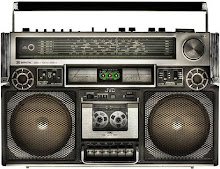From phonographs made by Thomas Edison to iPods made by Apple, we have seen a huge change in the development of technology when it comes to music players. Not only has the technology changed, but the styles and materials used to make these new products have changed as well. Starting with the 60s music players consisted of radios and transistor radios, LP records, tape recorders, FM radios and sterophones. When the 80s hit, another jump in technology occurred when companies started making Sony cassettes, walkmans and compact discs. Yet another significant change occured in the late 90s and on into the 2000s with the development of mp3s and iPods.
Transistor radios became popular in the early 60s. The advantages of transistors were that they were aportable way to listen to music and the news and were battery operated. This sparked the musical revolution of this era. The design of the transistor was not like earlier radio design. Designers stepped away from bright plastic. Most product designs of this era consisted of black or wood grain effects, plastics or leathers. Also, they had trimmings of brass, aluminum, chrome, or gilt, which gave items a heavy-duty look. The first popular transistor was the Regency TR-1. It came in four main colors: black, cloud gray, mandarin red, and ivory. There were other colors, such as pearlescent,but those where extremely rare.
Record players were another popular item on which to listen to music. One model that is very well known is the Dansette. Dansette was a record player from a British designer. It was small and came with a handle so it was easy to move around. It was cheap and very simple. Throughout the 60s record players began to improve. Some became battery operated and came in plastic cabinets, which had speakers in the lid. Along with record players came LPs, which stands for Long Play record also known as an album. This was the preferred disc for singles.
Record players did not last for long though before the next new music devices were developed—stereos and cassette tapes. Stereos came out in the 70s and 80s. There were many different designs for stereos. A well-known stereo was the floor standing rack stereo model. But of course,designers began making stereos smaller and more portable. They even created a cassette tape and a Walkman. Phillips developed cassette tapes in 1963. Consumers were able to listen to their favorite tunesin
This bring us to the new generation of music players. The mp3 players and iPods were the new big thing. Steven Jobs’s Apple Corporation created the iPod in 2001.The first iPod contained 5 GB of hard drive. This new music player didn’t have the normal buttons like the Walkman or even the CD player. The iPod had and still has wheel that controls the volume along with the play, pause, stop and menu buttons. There have been many generations of the iPod since the first one was created with each one getting more advanced than the last.
Citations:
technabob.com/blog/2007/02/08/
amale16.weebly.com/1962-1963.
history.sandlego.edu/
Atttwood, David. Sound design:classic audio &hi-fi design. Great Britain: Octopus Publishing Group Ltd., 2002. Print.






